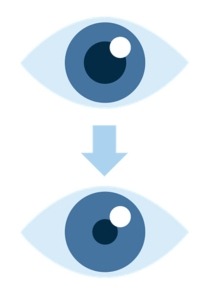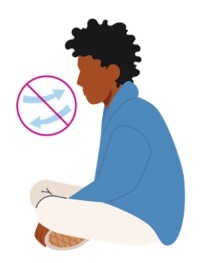Introduction
This lesson is focused on recognizing and responding to overdoses. Drug overdoses continue to occur at alarmingly high levels. While most teens don’t use drugs, overdose deaths for teens have risen to historic levels. You can help prevent overdoses in your community. Our primary objective today is to empower students with the ability to demonstrate practices and behaviors that support individual and collective health and well-being, specifically by recognizing the signs of an overdose.

Opioids are a class of drugs that include synthetic opioids such as fentanyl; pain relievers available legally by prescription, such as oxycodone (OxyContin®), hydrocodone (Vicodin®), codeine, and morphine; the illegal drug heroin; and many others. Use of opioids, either by themselves or in combination with other drugs, is a major driver of the drug overdose crisis in the United States.1 As we explore this topic, we’ll address the alarming statistic that in 2022, each day, 300 people are estimated to have died from drug overdoses.2 This number emphasizes the urgency of our collective responsibility to be informed and take action when needed.
This lesson will involve learning how to recognize the signs of an overdose and understanding the steps to respond effectively. We’ll also discuss the use of opioid overdose reversal medications such as naloxone and nalmefene. Both are lifesaving interventions, but currently, only naloxone is available over the counter, while nalmefene requires a prescription. Lastly, we will explore practical scenarios to reinforce the understanding of how to take action in real-life situations.
The vast majority of overdose deaths in recent years involved illicitly manufactured fentanyl and other potent, synthetic opioids, which may be added to other drugs and consumed unknowingly. Teens may witness an overdose in their communities and, as such, should be prepared to assist someone experiencing an overdose. This lesson teaches students how to recognize the signs of overdose, and the steps to take to help someone, including when and how to use lifesaving medications such as naloxone and nalmefene. The focus is on empowering teens to feel confident and comfortable by providing them with the tools and knowledge to help save a life.
Note to teacher: As you work through the lesson, be aware that some students may already have seen or known someone who experienced an overdose or, more broadly, someone who has a substance use disorder and may find it difficult to learn about the content of this lesson. It is appropriate to preface the lesson with a compassionate message about the content and a brief description of how students may seek support if they need it.
Optional Preface Language: Before we start this lesson, I want to give you a heads-up that we will be discussing opioids, a class of drugs, and overdoses. Some of you may have had past experience personally or within your family or friends around drugs or drug overdoses, and the information and scenarios in this lesson may be hard, emotionally. This is important information to learn; however, if you find that you need to take a break from the lesson, you may [describe the procedure that is appropriate for your school/classroom for students who need to take a break or seek emotional support].
This activity is designed to be delivered in an in-person classroom setting. It can also be adapted as a virtual assignment or an assignment for students to complete at home.
Student Objectives
Students will be able to…
- Demonstrate age- and developmentally appropriate health and safety practices that prevent or reduce the risk of disease and injury and improve quality of life by knowing the signs of an overdose and how to respond to help save a life.
Methodology and Assessment
Using the scenarios in the Responding to an Overdose worksheets below, have students demonstrate their knowledge of overdose symptoms and how to respond to an overdose. They should identify what symptoms of overdose are present, when to call for assistance, what steps to take in their specific scenario, and how to use opioid overdose reversal medications, such as naloxone or nalmefene, appropriately.
Activity
Teacher prompts are in italics.
Introduce the Skill
Today, we are going to learn about drug overdoses, how to identify the symptoms of a drug overdose, and what you can do to help if you think someone is having an overdose. This is an important skill to have in case of an emergency, much like CPR or first aid. First, I will explain how you can help, then we will go through an example together, and then you will divide into groups and work through a scenario together.
Though you can overdose on a number of different substances, today we will specifically be talking about overdose from opioids. Opioids are a class of natural or synthetic drugs that include both prescription medications and illegal drugs. You may have heard about examples of opioids such as heroin, oxycodone, or fentanyl. Some opioids come from plants and others are made in a lab with no natural ingredients.3 There’s a chance you or someone you know has been prescribed an opioid.
Ask: What are some reasons someone would be prescribed an opioid?
Possible answers: treat pain after a sports injury, treat a serious cough, treat pain after wisdom teeth are removed, treat side effects of cancer, treat pain after surgery, or treat pain after labor and delivery.
Like other medicines, opioids can be misused when they are not taken as prescribed by a doctor, or when the opioids used are illegal (drugs not prescribed to you by a medical professional or not bought at a pharmacy).
A high dose or long-term misuse of opioids can have serious negative health effects, some of them deadly. But even short-term or long-term use as prescribed by a health care provider can have harmful effects on the body.
If a person takes a higher drug dose than their body can handle, it can lead to an overdose. From 2019 to 2021, overdose deaths among teens ages 15 to 19 more than doubled. Teen drug use did not increase — the drug supply became more dangerous. In 2021, 1,714 teens died of a drug overdose. Illicit fentanyl was involved in 1,364 of those deaths.
Ask: What do you already know about how to recognize if someone is experiencing an opioid overdose?
Possible answers: pale and/or clammy face, bluish purple skin, grayish or ashen skin, limp body, purple or blue fingernails or lips, vomiting or gurgling noises, will not wake up, cannot speak, shallow/slow breathing, slow heartbeat, not breathing, no heartbeat. This will allow you to determine what foundational knowledge students already have for this skill.
Describe the Skill
It is an important skill to be able to identify opioid overdose symptoms and demonstrate the steps you should take in the event of an overdose.
When a person experiences an overdose,4 you may see the following signs:
Know the Signs of an Overdose
- Their face is extremely pale and/or feels clammy to the touch. For lighter skinned people, the skin tone turns bluish purple; for darker skinned people, it turns grayish or ashen.
- Their body goes limp.
- Their fingernails or lips have a purple or blue color.
- They start vomiting or making gurgling noises.
- They cannot be awakened or are unable to speak.
- Their breathing or heartbeat slows or stops.
- If you see any of these symptoms, stay calm. The best thing you can do in an emergency is try to remain calm so that you are able to help the person in need. Call 911 immediately. This is the first and most important step in responding to an overdose. Let the operator know that the person is unresponsive and not breathing, and tell the operator the address or a description of your location. The operator may give you further instructions.
In some cases, people worry about calling 911 because they do not want to get in trouble. As a result of the opioid crisis, many states and the District of Columbia have enacted Good Samaritan Laws in the event of an overdose. These types of policies may protect the person experiencing the overdose and the person seeking medical help for the person experiencing the overdose from drug possession charges.
Note to teacher: Look up your own state’s overdose prevention Good Samaritan Law, and share this with students. - The second step in responding to an overdose is to give the person a dose of an opioid overdose reversal medication, if you have one. An opioid overdose reversal medication is a lifesaving medicine that rapidly reverses the effects of an opioid overdose and restores breathing. There are currently two opioid overdose reversal medications available, naloxone and nalmefene. Nasal spray versions of naloxone and nalmefene are available and can be carried and administered by anyone. However, nalmefene is a newer medication, and therefore naloxone is more widely available; we will be focusing on naloxone in this lesson. When sprayed up a person’s nose like an allergy spray, naloxone can reverse the effects of the opioid and possibly save the person’s life.
After 2 to 3 minutes, if the person does not respond and you have a second dose of naloxone, give that second dose in the other nostril. If naloxone is not available, you can still help by continuing to follow the next few steps.
Optional: Show the How to Use Naloxone Nasal Spray video (0:30) (developed by the Centers for Disease Control and Prevention)
Note to teacher: If naloxone is available in your school/community, for example, in the nurse’s office or classroom first aid kit, inform students where they can find it. Consider sharing the National Association of School Nurses’ Naloxone Education for School Nurses Toolkit with your school administrators. - The third step in responding to an overdose is to try to keep the person awake and breathing. If they stop breathing or are breathing very weakly, rescue breaths can provide needed oxygen. Start administering rescue breaths, if you feel comfortable doing them. If you are unsure how to administer rescue breaths, follow the instructions of the 911 operator.5 Continue rescue breaths until the person’s breathing returns to normal. Note: You may need to provide rescue breaths until emergency personnel arrive.
- The fourth step in responding to an overdose is to lay the person on their side with their top leg bent (in the recovery position) to prevent choking, once the person can breathe on their own. If for any reason you need to leave the person unattended, make sure they are in this recovery position.
- Finally, stay with the person until emergency assistance arrives.
So, to review, someone who is experiencing an overdose may have a limp body, a pale and clammy face, or blue fingernails or lips. They may be vomiting or making gurgling sounds, they may be unable to speak or be awakened, and they may have slow breathing or a slow heartbeat.
When someone is experiencing an overdose, call 911 immediately. Then, administer naloxone if it’s available. While waiting for help to arrive, try to keep the person awake and breathing. Lay the person on their side to prevent choking and stay with them until help arrives.
Model the Skill
Now that we’ve discussed what symptoms to look out for and the steps to help with an overdose, we are going to work through an example scenario together.
Using Appendix 1 below, go through the scenario with the students. You can project the worksheet, share copies with students, or read the scenario and work through the worksheet on a whiteboard or blackboard.
Read through the scenario with the students.
Violet, a 15-year-old high school athlete, is at an away game with the school soccer team. Before the game, Violet hears her coach complaining of a headache and watches him take pills she can’t identify for the pain. At half time, she and her teammates notice her coach on the bench slumped over. His skin is pale, and his lips are slightly blue. They try to shake him awake, but he does not respond.
Now work through each section of the worksheet with students.
Ask: Given what we discussed earlier, what symptoms of an overdose is Violet’s coach experiencing in this scenario?
Answer: Blue lips, inability to speak.
Ask: When should Violet seek help?
Answer: Immediately.
Ask: Using the possible steps listed here, describe what Violet could do to help her coach, in the correct order. Are there any steps that would not be appropriate in this scenario?
Note: If not projecting the worksheet or sharing copies with students, write the Word Bank on the board.
Answer: Stay calm; call 911; administer naloxone, if it is available; keep the coach awake and breathing; stay with him until help arrives. In this scenario, as there is no mention of difficulty breathing, Violet would not need to administer rescue breaths or turn the coach on his side. Students may also mention that Violet should call for help from other trusted adults at the game.
Practice the Skill
We’re now going to split into groups and work through some scenarios to practice how to take action when someone may be experiencing an opioid overdose. Once your groups are done, we will share our conclusions and discuss them as a class.
Split the class up into four groups and hand each group one “Take Action: Responding to an Overdose” sheet (Appendix 2).
Work together with your group to read the scenario provided. Then, use the checklist to determine what symptoms of an overdose the person in the scenario is experiencing. Next, determine when someone should seek out medical assistance. Finally, write out the steps someone should take to help the person in the scenario.
Assess the Skill
Allow groups time to complete their provided scenario, then have each group present its scenario and the steps they think someone should take to help the person. Allow groups to provide feedback on others’ scenarios. For each scenario, after students have presented their decision-making steps and given feedback, review any errors using the answer key below.
| Symptoms | When to get help | Steps | Irrelevant Steps |
|---|---|---|---|
| Olivia | |||
| Immediately! |
| None |
| Noah | |||
| Immediately! |
| None |
| Alex and Parker | |||
| Immediately! |
| None |
| Taylor | |||
| Immediately! |
| Turn Taylor on their side |
After students finish sharing, say:
As we see in these scenarios, someone can experience an overdose at any time, and the signs may look different from one situation to the next. It’s important to be aware of all of the possible signs of an overdose but know that someone may only exhibit just one or two of the signs. Remember, someone who is experiencing an overdose may have a limp body, a pale and clammy face, blue fingernails or lips, and they may be vomiting or making gurgling sounds. They may be unable to speak or to be awakened, and they may have slow breathing or a slow heartbeat.
It’s also important to note which signs someone is showing, since that will help you determine which actions to take. For instance, someone who is still awake and breathing normally should not be given rescue breaths. As a quick refresher, the five main steps to follow if you suspect someone is experiencing an overdose are: (1) Call 911 immediately. (2) Administer naloxone if it’s available. (3) Try to keep the person awake and breathing, and administer rescue breaths, if needed. (4) Lay them on their side to prevent choking. (5) Stay with the person until emergency assistance arrives. Keep in mind that if more than one person is present in a situation where someone may be experiencing an overdose, some steps can be carried out simultaneously. One person can call 911 while someone else administers naloxone (if available) or tries to keep the person awake.
Overdoses can affect anyone. It can be hard to witness an overdose, but knowing the steps to take can help save someone’s life. After today’s lesson, you now have the knowledge you need to help someone experiencing an overdose.
Anyone can develop a substance use disorder. Treatment can help, and people can recover.
If you or someone you know experiences a substance use or mental health crisis, you can reach a trained crisis counselor who can help find treatment, by calling or texting 988, calling 1-800-662-HELP (4357), or visiting www.FindTreatment.gov.
References
- Opioids (2024). National Institute on Drug Abuse.
- Drug Overdose Rates (2023). National Institute on Drug Abuse.
- Mind Matters: The Body’s Response to Opioids (2019). National Institute on Drug Abuse.
- Naloxone Drug Facts (2022). National Institute on Drug Abuse.
- Opioid Overdose Prevention Toolkit (2024). Substance Abuse and Mental Health Services Administration.




